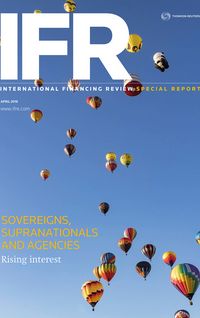Indonesia has become Asia’s premier sovereign issuer in deal conception and execution in what represents a transformation from the “flat-footed” to the “fleet footed.” Its success in offshore benchmarking has been a boon to the country’s issuers but the external and internal market outlook suggests this virtuous circle may be under threat.
Around a decade ago, there was a template for how Asia’s frequent benchmark issuers went about bringing deals to the primary market: there were the likes of the Republic of the Philippines and Korea Development Bank, which did it the right way; and there was the Republic of Indonesia, which did it the wrong way.
The former issuers would announce deals in New York hours, bring an already packed book to Asia and close the deal by close of business Pacific time, maximising price tension and invariably pricing within their implied curves. Timing tended to find the best possible execution window – often in the context of reopening primary markets which had been shut due to risk-off psychology – and term funding costs were minimised in the process.
Then you had Indonesia. The sovereign would conduct lengthy roadshows for Reg S/144a deals, often stretching over the best part of a fortnight. This laborious process often culminated in over-ripe trades where price tension had been compromised and where poor aftermarket performance was the norm.
A classic example would be Indonesia’s US$2.2bn three-tranche deal from June 2008 where the drawn-out timeline stretched over a period when US Treasuries backed up, costing the sovereign in absolute yield terms, and where the final outcome was pricing in the middle of guidance rather than at the tight end.
The republic has come a long way in the intervening decade, with quicker execution, aided by the fact that, given the Philippines’ effective withdrawal from the offshore markets in favour of raising domestic debt, Indonesia is now the premier sovereign issuer in the offshore primary debt markets.
A clear example of how far the republic has come would be its US dollar Global trade from last December, which was launched with a keen eye on market timing; the sovereign’s treasurers were keen to avoid the typical January logjam and found a handy market window with its US$4bn multi-tranche trade.
The revisiting of the SEC-registered issuance format which it has eschewed for 20 years was indicative of the republic’s willingness to bring a bit of novelty to its fundraising, and the market jumped on the paper, allowing for pricing well inside its implied curve. Taking the SEC-registered route perhaps explained the near 50% take-up of the deal by US investors.
Indonesia’s reliance on offshore funding has been something of a necessity given the limited opportunities for raising funds in size in the domestic rupiah markets, although there are commentators who believe that the sovereign leaves itself exposed to currency mismatch via this reliance and should do more to cultivate the depth of local bond markets so that it can avoid this risk.
“The key constraint stemming from the government’s reliance on foreign currency funding is that it impairs broader fiscal strength and renders Indonesia susceptible to currency shocks,” said Anushka Shah, AVP and analyst, sovereign risk group at Moody’s in Singapore.
Indonesia typically aims to raise around 30% of its annual funding target via the offshore bond markets, relying on US dollar, euro, yen and renminbi issuance. For 2018, the government has targeted a 2.19% fiscal deficit – within the target of 2.92% set out in the 2017 budget – on the assumption that GDP grows by 5.4%.
“The premium of Indonesian fixed income assets is a function of technical and perceptional items: firstly, the sovereign has been a very frequent visitor in the market, which has taken away the scarcity value of the credit. On the other hand, as an important emerging market index constituent, Indonesia is one of the core holdings,” said Florian Schmidt, founder and CEO of Singapore-based Frontier Strategies.
That fiscal deficit perhaps sits like a sword of Damocles over Indonesia, given the potential for sudden currency devaluation and capital flight, a risk which is increasingly palpable as the Federal Reserve moves to tighten rates, with the Fed funds rate having been increased by 25bp to 1.75% late last month and the central bank flagging two further rate increases this year.
The Asian foreign exchange market learned that lesson around five years ago when there was mass selling of currencies from countries in the region which ran fiscal and current account deficits, with the Indian rupee the biggest casualty, losing 17% versus the US dollar over the course of a few months in late in 2013.
“There is a concern after having been the market’s darling over the past few years thanks to an auspicious backdrop of a rallying currency and a super-charged bull market run in its local currency bond market, that the wheels fall off for Indonesia. This would involve speculative cash which was on a quest for yield in the days of super-compressed returns in the US high-grade debt markets suddenly heading back home. The sovereign would see spreads rising on its offshore debt as a result,” said a Singapore-based DCM head.
Ratings boost
Indonesia as a credit proposition has benefited from a positive ratings dynamic: the country was upgraded last May by S&P to investment-grade status – S&P was the last of the big three credit ratings agencies to lift the sovereign from junk bond status, after Fitch and Moody’s pushed up their ratings to investment-grade in 2011 and 2012, respectively.
Meanwhile, Indonesia has recently been included in Bloomberg Barclays Global Aggregate Index. This means that around US$150bn-equivalent of Indonesian government bonds will be included in the index, with Bloomberg Barclays of the opinion that non-sovereign debt will be added to the index in the future, a dynamic that is expected to further compress offshore primary market borrowing costs for the sovereign and inter alia Indonesian entities.
“Indonesia’s position as a prominent issuer in the international capital markets is a function of both the supply and demand dynamics. On the supply side, Indonesia is a large issuer because of its reliance on foreign currency funding as a significant source of financing the government’s debt burden, in large part a function of relatively shallow domestic capital markets,” said Moody’s Shah.
Indonesia’s trajectory as a must-have Asian credit item has undoubtedly been driven by the ratings dynamic and the positive onshore market backdrop. And although offshore participation in the Indonesian domestic market has been conspicuous, given the prohibitive cost of hedging Indonesian rupiah debt, which is estimated to ramp up to between 350bp–400bp at five years, there is an inclination to look at the country’s offshore primary issuance as a means of capturing that positive credit dynamic.
“From an offshore bond investor’s perspective, Indonesia has always been a core holding to diversify away from China and its real estate sector. All this was helped by more accurate and efficient price discovery as the Indonesian sovereign has constructed a densely populated and liquid yield curve,” said Frontier Strategies’ Schmidt.
Going it alone
A clear example of Indonesia’s “graduation” in the credit stakes has been its ability to access Japan’s notoriously conservative Samurai bond market without the need for political risk insurance.
Although Indonesia is a familiar credit among Japanese Samurai investors, with the sovereign having successfully tapped the market between 2009 and 2012, it was able last June to issue in public Samurai format without credit enhancement from the Japan Bank for International Cooperation, which had been necessary to clear the market on those MTN deals, as well as on shorter private placements.
The key takeaway on last year’s ¥100bn (US$896m) three-tranche Samurai was the achievement of yield compression for the sovereign’s first standalone public offering – its first in over 30-years of Samurai issuance – in which a spread tightening of as much as 50bp versus a 2016 Samurai private placement was achieved.
A move into positive spread territory from deep negative in yen swaps was partly responsible, but market participants attributed the pricing compression to an overall tightening across Indonesia’s secondary dollar and euro complex in the run-up to the Samurai pricing. And S&P’s ratings action the month before arguably provided a crucial boost. The republic is widely expected to tap the Samurai market again in 2018.
Meanwhile, Indonesia demonstrated its nimble approach to the offshore primary markets by pricing in February the country’s first Green bond and the first in Green sukuk format from a sovereign issuer. The dual-tranche deal carried a US$1.25bn five-year Green sukuk piece alongside a US$1.75bn regular sukuk tranche.
Although the emergence of the Green bond might have jarred with the international environmentally conscious community, which frowns on Indonesia’s credentials as the world’s fifth biggest emitter of greenhouse gases and its primary exporter of thermal coal, some 20% of the deal went to Green funds.
Further issuance in Green format is expected as the country works to meet the Paris COP21 accord, aiming to reduce emissions by 29% through to 2030.
To see the digital version of this roundtable, please click here
To purchase printed copies or a PDF of this report, please email gloria.balbastro@tr.com



